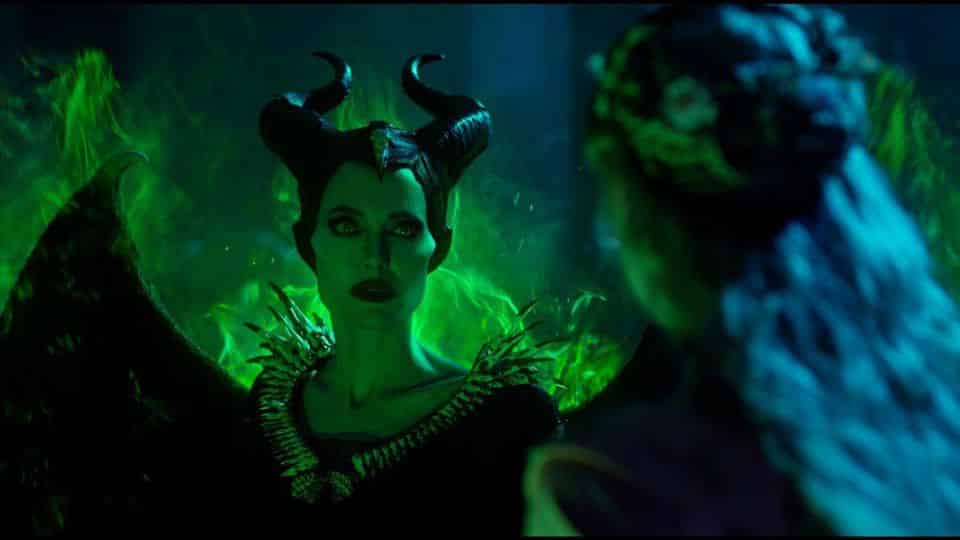
Maleficent: Mistress of Evil continues the exploration of its title character, played again by Angelina Jolie, as it explores her true nature and if the title Mistress of Evil is truly warranted. With Maleficent’s goddaughter Aurora (Elle Fanning), Queen of the Moors, betrothed to Prince Phillip (Harris Dickinson) many are hoping this will signal a time of peace between the fae and the human world. But things are rarely so simple when histories spanning generations have forged preconceived notions of others. And when you walk around with the title of Mistress of Evil, people are quick to accept that those notions are more ironclad than they might actually be.
Maleficent: Mistress of Evil, like all great fairy tales, is a story about morality, centering on themes of co-existence, love, and letting go of old grudges. The story speaks to many problems that the world struggles with, even though the delivery is somewhat predictable. And while not everything that is the product of the House of Mouse is for the best, these sorts of positive tales certainly are one of the better parts of Disney’s myriad of offerings.
The center point to all that Maleficent: Mistress of Evil does is Jolie’s stellar performance. With Jolie’s acting, Maleficent is not only a truly three-dimensional character but also infinitely relatable. From the start, Maleficent finds her the target of everyone’s assumptions. We all know what it’s like to feel like people are all too happy to judge us based on assumptions. Nowhere does this theme get more exploration than at a fateful dinner.
With the impending nuptials, Prince Philip’s parents decide to invite both Aurora and her godmother to dinner to celebrate. This sequence is a complete fairytale masterpiece. It bears instant correlation with a similar classic sequence from Shrek 2. This one just doesn’t use humor to diffuse the palpable tension within the room. While Jolie dominates every other scene in Maleficent: Mistress of Evil, this scene belongs completely to Queen Ingrath (Michelle Pfeiffer). The stark venom Pfeiffer infuses in every thinly veiled insult is perfection. By the time Maleficent has had enough the viewer is right there with her. A small part of me wanted her to slap her passive-aggressive attitude down.
However understandable the loss of control may be, it is also Maleficent’s undoing. When things go south, she must flee from the castle. Where Maleficent ends up for the second act of the film I won’t spoil it. The revelations it produced were something I had not expected. But even though the initial reveal was surprising, the various story beats it took up quickly feel exactly like where I expected them to go. I feel like it is the momentary surprise that makes the subsequent predictability feel so note-worthy.
However, even if the beats feel predictable, they are still executed with brilliance. The writing is spot on and Chiwetel Ejiofor‘s acting is masterful. Ejiofor’s character provides an excellent thematic counterpoint to Pheiffer. This is most evident in the character’s unwillingness to presume upon Maleficent. His are the only scenes in Maleficent: Mistress of Evil where someone doesn’t presume to know who Maleficent is.

With Maleficent searching for what she truly is, and Queen Ingrath preparing for her inevitable return, the final act brings a satisfying conclusion to the movie’s story arc. Director Joachim Rønningg does a great job of balancing the excitement of the final confrontation with truly heartfelt moments. I couldn’t help but become swept up in all the drama and adventure that unfolded. The only complaint I have with this story’s ending is its adherence to a predictable “happily ever after” style ending.
Throughout Maleficent: Mistress of Evil we see that the world is not as simple as the old fairy tales used to make it out to be. With complex social themes woven throughout the narrative, it does a disservice to itself to act like so many deep-rooted problems can be tied up in such a tidy package.
Before I wrap up, I must also take a moment to praise the visual design in Maleficent: Mistress of Evil. Gorgeous vistas and striking towers that seem to touch the heavens are just some of the eye-catching wonders served up throughout the course of this tale. And there are a few key scenes where lighting and shadow get used to an extraordinary extent. It’s easy to forget how much power the radiance of light can wield amidst the myriad tricks and tools movies wield these days.
While Maleficent: Mistress of Evil suffers from treading down some fairly well-worn paths it does it with exceptional skill. Filled with excellent performances and a striking visual style the film tells a tale that is both captivating and meaningful. If everyone that walks into a theater to watch this could take a few of its messages to heart the world might be a bit brighter of a place.
Maleficent: Mistress of Evil is in theaters nationwide.
Maleficent: Mistress of Evil
-
Rating - 8.5/108.5/10
TL;DR
While Maleficent: Mistress of Evil suffers from treading down some fairly well worn paths it does it with exceptional skill.




